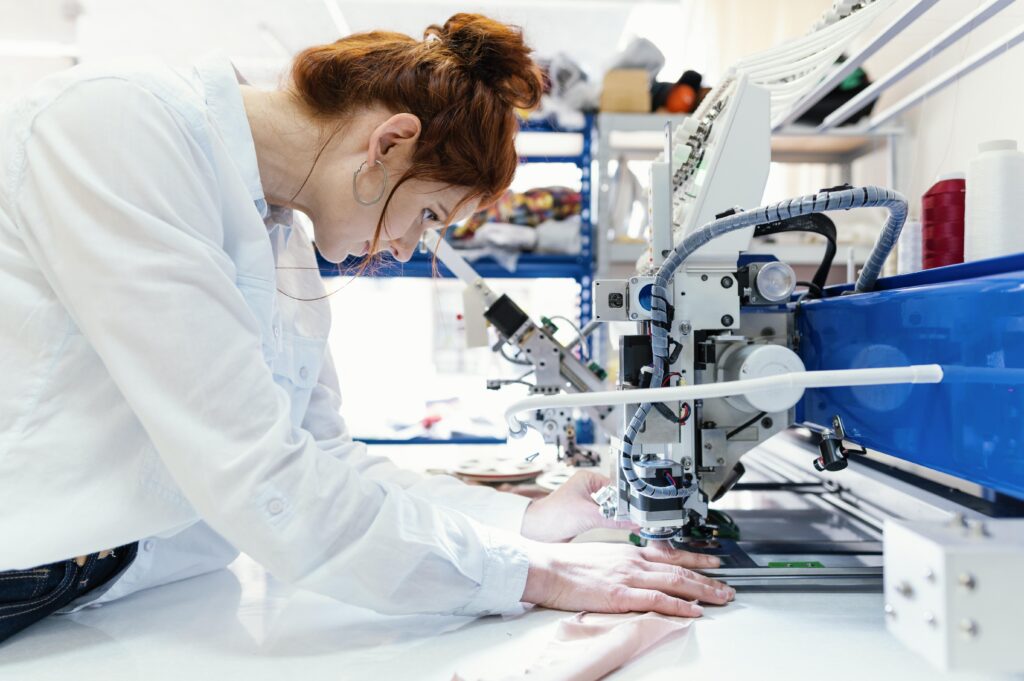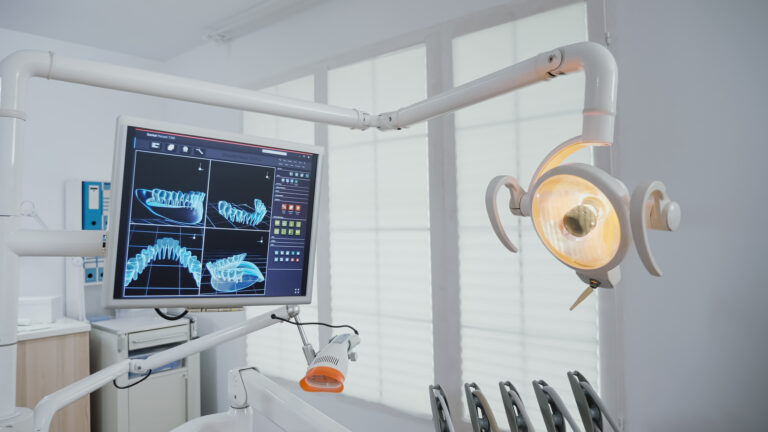Why CDSCO Registration Matters for Medical Device Manufacturers in India
Table of Contents
Introduction
For Healthcare MSMEs and medical device manufacturers, getting CDSCO Registration is not just a requirement; it’s your license to legally operate in India’s growing healthcare market.
Whether you sell surgical tools, diagnostic kits, or electronic monitoring devices, the Central Drugs Standard Control Organization (CDSCO) regulates your business.
Without registration, you risk shipment delays, legal action, or being disqualified from selling on government and hospital procurement platforms.
Moreover, CDSCO compliance boosts your credibility.
Distributors, hospitals, and even B2B marketplaces are now asking for registration details before placing orders.
So, if you want to scale your sales and avoid compliance risks, it’s time to understand the registration process.
This article will guide you through each step of CDSCO registration in simple terms.
You’ll learn what documents are required, how long it takes, and how small device manufacturers can prepare better.
Let’s make sure you’re compliant and ready to grow, starting now.
1. What is CDSCO, and Why is Registration Mandatory for Medical Device Manufacturers in India?
The Central Drugs Standard Control Organization (CDSCO) is India’s national regulatory authority for drugs and medical devices.
It functions under the Ministry of Health and Family Welfare and ensures that all medical products, especially devices, are safe, effective, and legally approved for public use.
For Healthcare MSMEs and Medical Device Manufacturers, CDSCO registration is now mandatory under the Medical Device Rules (MDR), 2017.
These rules were introduced to bring structured regulation to medical devices, similar to how pharmaceuticals are controlled.
Since 1st October 2023, many Class A and B devices (like surgical gloves, thermometers, BP monitors) require mandatory CDSCO licensing before they can be legally manufactured, imported, or sold in India. Without it, your products may be seized, blacklisted, or rejected from major B2B buyers and hospitals.
In short, CDSCO registration is no longer optional. It’s a legal gateway that ensures compliance, market access, and trust in your product offerings.
2. Which Categories of Medical Devices Require CDSCO Registration in 2025?
As of 2025, CDSCO registration is required for all four risk-based categories of medical devices classified under the Medical Device Rules (MDR) 2017.
The classification is based on the level of risk the device poses to the patient or user. Here’s a quick breakdown:

Class | Risk Level | Examples | Registration Requirement |
Class A | Low Risk | Thermometers, surgical dressings, tongue depressors | Online registration + self-certification |
Class B | Low-Moderate Risk | Blood pressure monitors, syringes, IV cannulas | Requires a CDSCO license through the state authority |
Class C | Moderate-High Risk | Dialysis machines, infusion pumps | CDSCO license needed via central licensing |
Class D | High Risk | Heart valves, stents, and implantable pacemakers | Strictest CDSCO control and audits |
For Healthcare MSMEs and Medical Device Manufacturers, knowing your device’s class is critical.
Class A and B devices must be licensed before sale, while Class C and D require central-level approval with stricter technical documentation, audits, and post-market vigilance.
By 2025, most B2B marketplaces, hospitals, and distributors will not accept products without valid CDSCO compliance.
Therefore, getting registered based on your device class is a non-negotiable legal step for business growth and compliance.
3. What is the Step-by-Step Process for Obtaining CDSCO Registration for a Medical Device?
To help medical device manufacturers and healthcare MSMEs stay legally compliant, here is a simplified step-by-step process to obtain CDSCO registration in 2025:
Step 1: Identify Device Classification
First, confirm whether your medical device falls under Class A, B, C, or D as per the Medical Device Rules (MDR) 2017. Each class has a different approval process.
Step 2: Register on the SUGAM Portal
Visit the CDSCO SUGAM Portal and create an account as a manufacturer or importer. This portal is used for submitting all regulatory applications.
Step 3: Prepare the Required Documents
Gather your Technical Dossier, including:
- Device Master File (DMF)
- Plant Master File (PMF)
- ISO 13485 certification
- Clinical safety and performance data
- Free Sale Certificate (if applicable)
- Undertaking of legal compliance
Step 4: Submit Online Application
Choose the correct application form:
- MD-5 for Class A/B domestic devices
- MD-7 for Class C/D devices
Upload documents and pay the required CDSCO registration fee (varies by device class and domestic/import status).
Step 5: Review & Clarifications
CDSCO authorities will review your file. They may raise queries or request more information. Timely response ensures faster processing.
Step 6: Site Inspection (If Required)
For Classes C and D, an audit of your manufacturing facility may be conducted to check GMP compliance.
Step 7: Receive License
Once approved, CDSCO issues a Registration Certificate (Form MD-6 or MD-8). This license must be renewed as per the validity terms.
Important Tip:
Delays often happen due to incorrect documentation. Use a professional consultant or regulatory advisor for faster approvals.
By following this registration roadmap, medical device manufacturers can ensure their products are legally ready for sale in both B2B marketplaces and clinical institutions.
4. What Documents Are Needed to Complete the CDSCO Device Registration Process?
To complete CDSCO registration, medical device manufacturers and healthcare MSMEs must submit specific documents based on their device class (A, B, C, or D).
Proper documentation ensures faster approvals and legal compliance under the Medical Device Rules (MDR), 2017.
Here’s a checklist of essential documents:
Mandatory Application Forms
- Form MD-5 – For Class A/B devices (domestic)
- Form MD-6 – Registration certificate issued after approval
- Form MD-7 / MD-8 – For Class C/D devices (application and approval)
Regulatory & Legal Documents
- Cover letter stating device purpose and category
- Undertaking of truthfulness and compliance
- Authorized Indian agent (AIA) declaration – For foreign manufacturers
Quality & Safety Certifications
- ISO 13485 Certificate – Proof of quality management system compliance
- Free Sale Certificate (FSC) – For imported devices
- CE Certificate or US FDA approval – Optional but supportive
Technical Documentation
- Device Master File (DMF) – Detailed info on device design, labeling, risk analysis
- Plant Master File (PMF) – Manufacturing site layout, processes, and controls
- Clinical Evaluation Report (CER) – Safety and performance data (esp. for Class C/D)
Additional Supporting Documents
- Test Reports – Electrical, mechanical, biocompatibility (if applicable)
- Instructions for Use (IFU) – How-to guide for clinical use
- Labeling Samples – As per CDSCO format
- Purchase invoice/proof of ownership – For domestically manufactured devices
Pro Tip:
For imported devices, make sure all documents are notarized and apostilled from the country of origin.
These documents play a crucial role in proving your device is safe, effective, and ready for legal sale in India.
Always double-check with the latest CDSCO guidelines or consult a regulatory expert to avoid delays.
5. How Long Does CDSCO Registration Take, and What Are the Typical Costs for MSME Manufacturers?
For medical device manufacturers and healthcare MSMEs, understanding the timeline and cost structure of CDSCO registration is crucial for planning production and market launch.
CDSCO Registration Timelines by Device Class
Device Class | Approximate Approval Time | Notes |
Class A | 30–45 days | Self-certification, faster processing |
Class B | 45–90 days | Includes document review |
Class C | 90–150 days | May require inspection and evaluation |
Class D | 120–180 days | Includes clinical data review and site audit |
Tip: Delays can occur if documentation is incomplete or queries are not responded to quickly.
CDSCO Fee Structure for Indian Manufacturers (2025)
Form | Purpose | Government Fee (INR) |
Form MD-5 | License to manufacture Class A/B devices | ₹5,000 per site + ₹500/device |
Form MD-7 | License to manufacture Class C/D devices | ₹50,000 per site + ₹1,000/device |
Device Testing | For high-risk devices (if required) | ₹5,000 – ₹25,000 (approx.) |
Third-party consultant (optional) | Regulatory filing support | ₹10,000 – ₹50,000+ depending on complexity |
Cost Optimization Tips for MSMEs
- Use CDSCO’s free SUGAM portal for direct submissions.
- Bundle multiple devices in one application if applicable.
- Start with Class A/B devices to enter the market quickly.
Overall, CDSCO registration is affordable for most small manufacturers, especially if planned well.
A clear understanding of timelines and fees ensures smoother compliance and market readiness.
6. What Are the Penalties or Risks for Selling Medical Devices Without CDSCO Approval?
For Healthcare MSMEs and Medical Device Manufacturers, skipping CDSCO registration is not just risky, it’s legally dangerous.
The Medical Device Rules (MDR) 2017 strictly regulate device manufacturing and sale in India.
Key Risks of Non-Compliance
Risk Type | What It Means |
Monetary Fines | Penalties can range from ₹1 lakh to ₹10 lakh per offense, depending on the device risk. |
Product Seizure | Unregistered devices can be confiscated by regulatory authorities without prior notice. |
Business License Cancellation | CDSCO can cancel or suspend your manufacturing or import license. |
Legal Proceedings | Violations may lead to prosecution under the Drugs and Cosmetics Act, 1940. |
Loss of Buyer Trust | Hospitals, clinics, and distributors avoid buying from unregistered or blacklisted vendors. |
🔍 Real-World Impact
- A small manufacturer selling Class B diagnostic devices without registration could face legal action, plus loss of tenders or contracts.
- Many government procurement schemes require CDSCO registration as a precondition.
Avoid the Risk
Always verify if your device class requires CDSCO clearance. Start the process early, keep documentation ready, and consult a compliance expert if needed.
Selling without approval isn’t just non-compliant, it damages your credibility, revenue, and future prospects.
Conclusion: Don’t Delay CDSCO Registration, It’s Your Compliance Lifeline
For Healthcare MSMEs and Medical Device Manufacturers, CDSCO registration is not just a formality; it’s a must-have for legal operations and long-term growth.
From understanding the MDR 2017 regulations to identifying your device class (A, B, C, D), each step demands accuracy.
The SUGAM portal has simplified the submission process, but missing key documents like ISO 13485 or a Device Master File can stall your application for weeks or even months.
Without CDSCO approval, you risk massive penalties, product seizures, canceled tenders, and even prosecution.
Plus, your credibility with hospitals, distributors, and B2B buyers suffers greatly.
Don’t wait until authorities issue a warning. Start your compliance journey now.
Use verified tools, keep documents audit-ready, and track every submission detail carefully. This is your foundation for expanding into regulated markets and gaining serious buyer trust.
The Following Video Might be Helpful for You
Also Read,
- The Ultimate Guide: Working Capital Loans for Small Business (MSMEs) in 2025
Understanding the Impact of Payment Terms on Working Capital for Clinics
How Poor Inventory Management Hurts Working Capital in Pharmacies.
Want a Better Business Credit Score? Small Pharmacies Can Now Use UPI & Cards to Build It
Want a Better Credit Score? Use Small Daily Payments to Build Your CBIL (For Clinics & Pharmacies)
Case Study:How a Small Clinic Improved Its Working Capital Management





